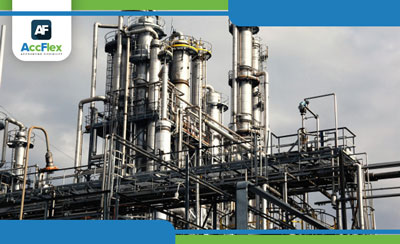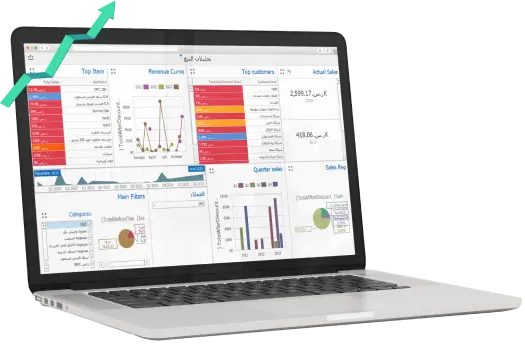The manufacturing overhead budget consists of
- Indirect materials are materials used in the manufacturing processes and which cannot be linked to a specific product or job; and indirect materials such as fuel, oil, spare parts, and maintenance materials
-Indirect Labor: remuneration of supervisors and foremen in the production departments
-Indirect Expenses: which are any manufacturing costs other than indirect materials and indirect labor such as the utility bills, depreciation and insurance, and the rent of factory building and any other manufacturing costs, if any
The importance of manufacturing overhead budget
1- It is prepared before production with period sufficient to examine possible alternatives to obtain the services associated with the best and lowest cost such as fuel cost analysis over the previous periods and knowing its consumption rates and also analyzing the cost of electricity and examining the reasons that lead to changing its cost from one period to another and knowledge the consumption of each machine or each production center of electricity and the comparison of the rate of consumption with similar organizations.
2- Determining the cash requirements and the time required to pay the cash obligations related to manufacturing overhead.
3- Providing the departments with the data necessary to calculate the predetermined overhead rate that is required to calculate the cost of production per unit, and also tightening control over manufacturing overhead.
4- The most important thing when preparing the manufacturing overhead budget is the ability to clearly distinguish between the indirect cost behavior in terms of change and stability, and this is to achieve accuracy when estimating these costs in light of the different levels of production, this budget is largely based on the production budget and production requirements are estimated using predetermined overhead rate.
Preparing a Manufacturing Overhead Budget
To prepare a manufacturing overhead budget, a set of procedures must be done
1- Separating the manufacturing overhead budget into two types, namely variable costs that vary in total with changes in the volume of activity such as the activity of sale or production, and fixed costs that do not fluctuate with changes in the volume of activity, and therefore when preparing the manufacturing overhead budget, are classified as follows:
(A) Variable manufacturing overhead costs.
(B) Fixed manufacturing overhead costs.
Variable costs mean that vary proportionately to changes in the volume of activity, and they are similar to direct material in their behavior
Fixed costs are costs that do not change with changes in production volume and are independent of the number of units produced or labor hours
Semi-variable costs, which varies with every increase or decrease in the volume of activity but does not vary proportionately, and are those which have the characteristics of fixed costs and variable costs, both
In other words, it has a fixed element at all levels of operation and a variable fixed element directly with the rate of units produced or additional labor hours
Fixed costs are the costs that do not change with the change in the volume of production and this is at the appropriate level of activity in the sense that the cost of the factory rent is a fixed cost whether the work is in the factory for a month or two weeks only, the rent will be paid in full in the sense that it is a cost that does not change with the change in the volume of production and is fixed at the total level and variable for the unit
Unlike variable costs, which are variable at the total level and fixed at the unit level
2- Analyzing the behavior of each element in relation to the change in the volume of activity
In other words, determining the nature of each element of the expenses that are included in the budgets, manufacturing overhead costs, for which the cost record must be analyzed by analyzing the cost of each of these elements in the previous months at different levels of operation so that the rate of change in the cost of each element can be determined and thus it can be analyzing its nature
When determining the level of operation during the month or period in which the manufacturing overhead budget is prepared must depend on two elements
A- The number of units expected to be produced during the budget period
B - The number of hours of manual labor or the machine required to produce the unit
The equation used is
TC = a + bx, where
TC = total cost
a = fixed cost
b = variable rate per hour
x = number of labor hours
To calculate the variable rate, it is equal to Change in Cost/ Change in Volume of Activity
For example, the Maintenance Department, and let's say that the number of machine-hours during the first 4 months of the previous period, let it be
January 6000 hours & February 4000 hours & March 5000 hours April 8,000 hours
And the maintenance cost was during the 4 months
January 50000 & February 40000 & March 45,000 April 60000
First, must be determined the highest level- the lowest level
|
Activity Volume Hourly Rates |
Maintenance Cost |
|
|
Highest level |
8,000 |
60,000 |
|
Lowest level |
4000 |
40000 |
Variable rate = Change in Cost / Change in activity
= (60000-40000) / (8000-4000) = EGP / hour
This means that every machine-hour has an increase in the maintenance cost by 5 EGP / hour
By compensation at the highest level or lowest level, the amount of the fixed element can be determined
At the highest level, 8,000 hours and the total maintenance costs 60,000 EGP
Total Cost = fixed costs + variable costs
60000 = fixed costs + (8000 * 5)
Fixed costs = 60000-40000 = 20000
We conclude that the fixed costs of spare parts during the period are equal to 20,000 EGP and one machine-hour will cost 5 EGP, and according to the machine-hours is the total variable cost will be
Semi Fixed Cost
Are fixed costs within a certain level or range of available production capacity, so that they increase by a limited amount at the end of this level
Example
We assume that maintenance costs are 1000 when the level of operation of the hours is 1% of the production capacity, and it is preferred to be fixed at 1000 until the operation level reaches 25% of the production capacity, whereby the cost increases by 200 EGP and then remains fixed at 1200 EGP until the level of operation reaches 50% of the production capacity it increases by 200 EGP and remains fixed at 1400 EGP until the level of operation reaches 75% of the production capacity, then it increases by 200 EGP and then remains fixed at 1400 EGP until the level of operation reaches 100%, so it increases by 200 EGP to reach 1600.
Thus, the maintenance costs are shown as follows
|
Operation level of production capacity |
Maintenance |
|
1% to 25% |
1000 EGP |
|
26% to 50% |
1200 EGP |
|
51% to 75% |
1400 EGP |
|
76% to 100% |
1600 EGP |
This means that fixed costs are within the limits appropriate for a particular level of operation, and when you exceed this level, the fixed costs change
1- When determining the variable and fixed element of manufacturing overhead costs, the next step is to determine the predetermined overhead rate by choosing an appropriate allocation base, let it be, the direct labor hours or any other base that is appropriate to the nature of the production cost center such as the machine-hours
Better, is to find an application rate for each production cost center by dividing the estimated manufacturing overhead of the production cost center by its allocation base
Machine-hours is the most appropriate rate to allocate the estimated manufacturing overhead costs to the products, especially if the estimated manufacturing overhead costs are for the depreciation and maintenance of machinery, electricity bill, and machine insurance, and it is preferred to use it if the working at the production cost center is much more automated than the manual labor, the higher the degree of using the machine, the better of using the machine hour rate, because it will be appropriate.
It is assumed that the production cost center, which consists of a group of machines, for example, that its production capacity is convergent in the sense that it consumes convergent costs for each other of the machine-hours with convergent degrees, but if there is a variation in the productive capacity of the machines, it is better the production cost center is divided into sub-cost center groups and for each of them is calculated appropriate application rate
Predetermined Overhead Rate = Estimated total Manufacturing Overhead Costs/ Estimated total number of machine-hours in the production cost center
In other words, the estimated total manufacturing overhead costs that will be allocated during this period are identified by the previous data, with adjustments as the department’s vision in each fiscal period
The number of machine-hours in the production cost center is identified from the company’s previous estimated data
The estimated manufacturing overhead is divided by the allocation base, which is the number of machine-hours, for example, to obtain the application rate, after which the number of hours needed for each production order or work order in each production cost center is determined
For example, production order No. 101 for producing 100 pants, the application rate was 10 EGP/ per hour, for example, and this production order requires 20 hours at the cutting center, for example
Thus, the estimated manufacturing overhead that this cost center will allocate is= 10 EGP * 20 hours = 200 EGP
Each of the production order will have its proportion of manufacturing overhead= 200/100 = 2 EGP
And of course, it is added to the direct material cost and the direct labor cost
Direct Material Cost Percentage Rate
The rate is used when are direct materials when analyzed indirect costs in a production cost center and it shows that there is a correlation between manufacturing overhead and the direct material cost in the sense that indirect costs start to increase when issuance of direct materials in this production cost center
Direct material cost percentage rate = Estimated overhead cost to be absorbed/ Estimated direct material cost
It is preferable to use this rate as the predetermined overhead rate basis in the case that there are direct materials quantity constant needed to manufacture the product unit and also where raw materials prices are stable, but if the prices of raw materials not steady, using this rate will not be appropriate










